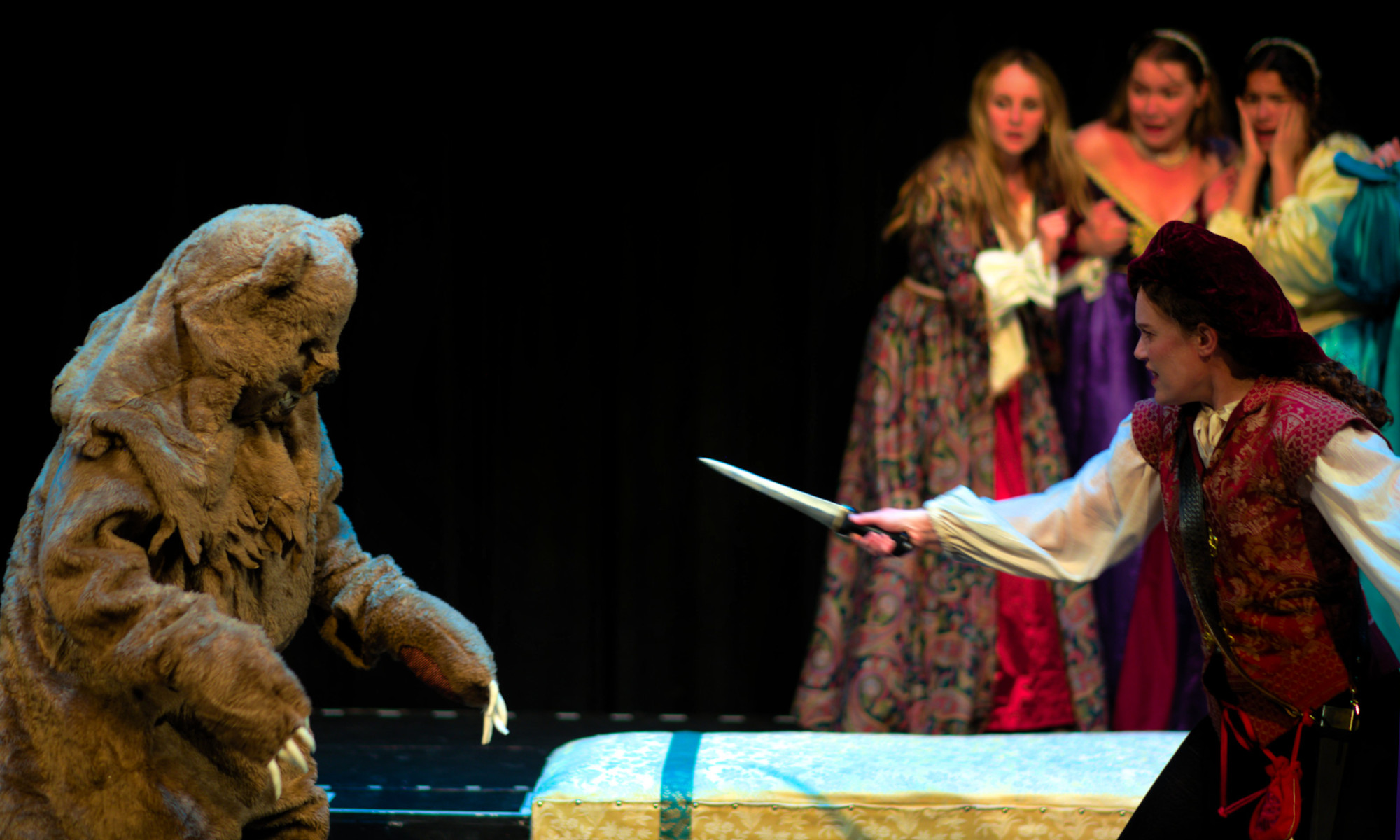
But the other two, the Whiting and the Schnitzler, required sets that taxed our tech skills and resources at least as much as the ones I wrote about for our eleventh season. Penny for a Song takes place in 1804, in the garden of an English landowner, Timothy Bellboys, who has somehow convinced himself that Napoleon is about to invade England. He has stationed one of his servants on a platform in a tree so that he can spot the invading French army.

So we had to build the tree. (The actor spent the entire show in the tree.) He has sent to London for a Napoleon costume, so that when the French invade he will drop among them pretending to be the emperor and order them to “Mettez bas vos armes!” and to return to France. He will literally drop among them; he has purchased a balloon.

But the local militia is holding an exercise in the area and when the young man in the tree sees them he sounds the alarm and Bellboys descends, in costume, in his balloon—into a well. The militia take him to be Napoleon, and arrest him. So, in addition to the tree we had to build the well and the gondola and rigging of the balloon. Also, there was a gazebo on the set and the facade of the Bellboys’ mansion.

And there were necessary special effects: fireworks and a cannon ball that had reached the very end of its range and needed to roll onto the stage and stop just at an actor’s feet.

Der Reigen (It’s an Austrian play, but for some reason, perhaps because of a French movie based on it, it is usually known by the French translation of its title; La Ronde) presented a different kind of problem. It is a play in ten scenes and each scene takes place either just after a sexual encounter or it leads up to one with a different couple in each scene. Thus:
Well, that’s ten different sets; each scene takes place in a different place. So we built two revolving platforms, two turntables, each about 16 feet in diameter with a black curtained semi-circle that would hide the platform when it was turned one way and would reveal a set when it was rotated the other way. At each scene change we rotated both turntables to show a new set in one while hiding the set on the other. While it was hidden we would change all the furniture in it for the scene that would follow whatever was being played on the other, the exposed turntable.

It was not a beautiful show but it worked.


